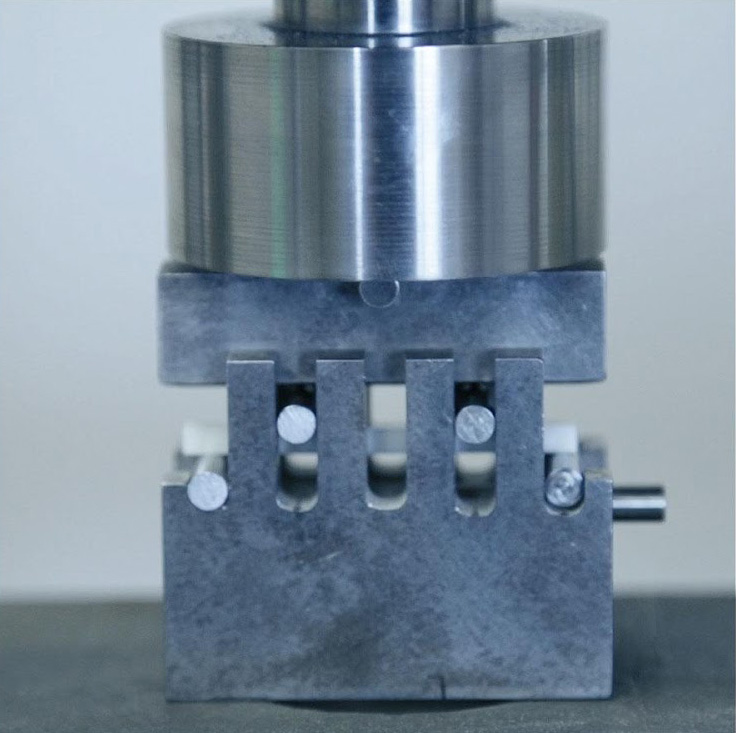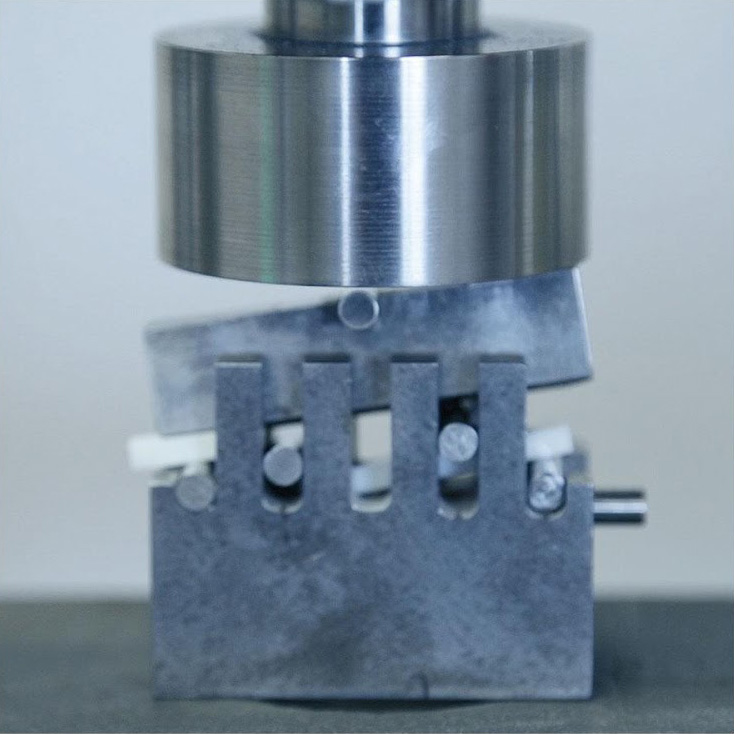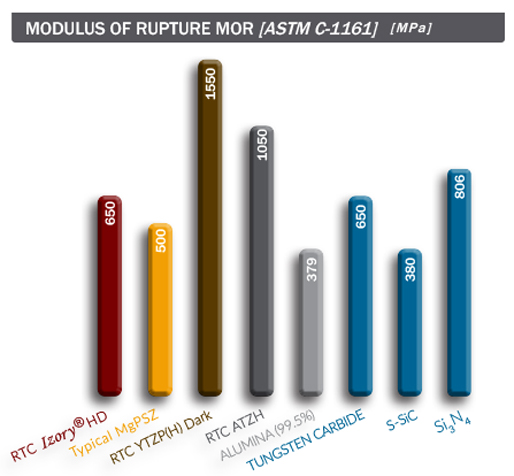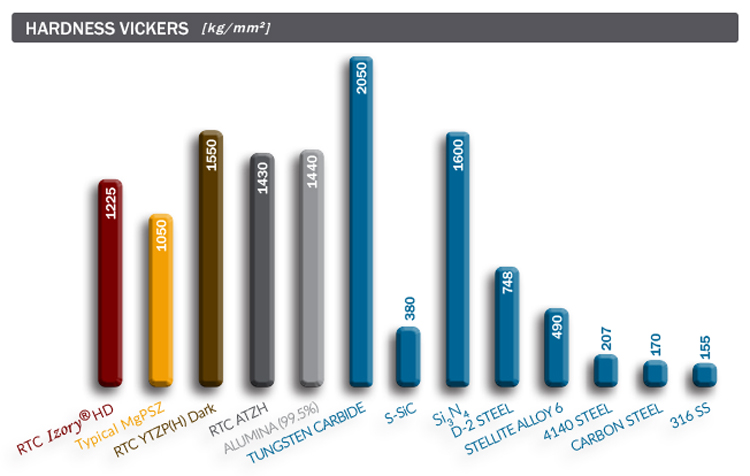Refractron specializes in toughened zirconias and offers three core formulations: Izory®HD (a variation of Mg-PSZ), YTZP(H) Dark, and ATZ(H).
How to Choose a Material for Severe Service?
Selection can be broken down into many different factors, but we’ve started with six that are critical. Each should be evaluated individually and then ranked by likely impact and risk. A decision should be made heavily based on the most critical aspects needed for the job. For example, Refractron’s HIPed YTZP offers excellent strength, but Izory®HD is tougher. Izory®HD is more resistant to fissures that can cause failure. It also is more economical because it uses less expensive raw materials in processing, can be ground rapidly and aggressively to precise tolerances, and does not require an additional HIPing.
Six Critical Factors to consider:
- Toughness
- Strength
- Hardness
- Abrasion Resistance
- Corrosion Resistance
- Application Conditions
1: Fracture Toughness
Fracture toughness is related to ruggedness. It is a way of expressing resistance to crack propagation that can cause catastrophic failure due to internal flaws and/or external damage due to machining, handling, and installation. Fracture toughness can be quantified with a standard test, ASTM C1421, which measures resistance to failure after the material is notched to simulate a flaw. This, like many properties, is a convenient starting point to compare the fracture toughness of advanced materials.
Each of Refractron’s zirconias has a different fracture toughness but all are commonly referred to as being “transformation toughened”. This type of toughening mechanism harnesses a metastable crystallographic transition of zirconia that is triggered by a stress rather than by a temperature change. The transition produces a volume expansion that blunts a propagating crack which normally would result in catastrophic failure of a ceramic. Izory®HD, often called “ceramic steel,” has the highest fracture toughness because other mechanisms contribute to the toughness.
Sintered SiC, and tungsten carbide materials have their merits, but they offer a fraction of the toughness that is found in Refractron zirconias. If it is important to have a material that is resistant to chipping during machining, handling, and installation or crack propagation during service, Izory®HD is an excellent choice.
2: Strength
MOR (Modulus of Rupture) is a property that allows us to rank the strength of ceramics. It is the point at which the material breaks during a bend test while a force is applied. Specimens are broken by a load anvil device while a metal fixture provides line support near the end of a sample of specified dimensions (Figure 1). MOR is reported in MPa units as a 3- or 4-point measurement, so it is important to clarify the method.
The 3-point always yields MOR values that are 15 to 20% higher than the 4-point because peak stress is applied only at the midpoint of the sample. In contrast, the 4-point test produces peak stresses that are distributed along an extended region thereby exposing a larger length/volume of the material.
Since the strength of a ceramic is limited typically by a non-homogeneous distribution of defects in its volume, 4-point testing (ASTM C-1161) reported by Refractron best characterizes the material. Structural aluminas and sintered SiC ceramics are 3-4 times weaker than HIPed YTZP and ATZ and almost two times weaker than Izory®HD. The table to the right highlights typical values.
3: Hardness
For structural ceramics, high hardness is important as it describes resistance primarily to scratching. In turn, it relates to in-service wear (see below) due to friction or erosion by fluids sometimes laden with fine particulates.
Refractron measures Vickers hardness (ASTM C1327) to characterize this property. A microscope is used combined with a stage to mount and level a sample and a device to transmit a load to it via a small diamond square pyramid tip. Loads typically greater than 200 gram(force) are used to generate a diamond indent on the sample. A Vickers Pyramid Number (Hv) is calculated from F/mm2, where F = load in kg and mm2 = area of the indent. This F/mm2 unit does not reflect true pressure but can be converted to MPa, if needed, by an available formula. In general, Hv is independent of the test force although it is good practice to verify this with larger loads. The property is reported, for example, as Hv2 and sometimes as Hv2/20, where 2 = 2kg(force) and 20 = 20 seconds of applied force.
4: Abrasion Resistance
Abrasion resistance, also referred to as wear resistance, is the ability of a ceramic surface to withstand degradation from erosion and rubbing or friction. Refractron’s zirconia products have high ratings from Loop Abrasion measurements, ASTM G174 (option C), making them an appropriate choice for many different applications. The test uses a commercially available tape manufactured with high hardness, 3μm alumina particles. The tape traverses a flat sample for a specified number of belt passes, typically 75, while exerting a force of 100g. This creates a scratch of finite depth that is analyzed by tribological software which reports wear as material loss in mm3. Wear resistance measurements that use low hardness media such as quartz to erode samples of structural ceramics having high Hv cannot be used to make reliable comparisons of materials.
With one exception, wear resistance correlates well with Hv to yield the high to low sequence: Tungsten carbide, sintered SiC, HIPed ATZ followed by alumina, HIPed YTZP and Izory®HD. HIPed ATZ is an interesting anomaly because its resistance is by far the best of the typical list of advanced ceramic oxides and even greater than its constituent phases, alumina and YTZP.
In applications where rubbing or sliding among dissimilar materials could produce erosion, polished Izory®HD shows remarkable performance despite having the lowest Hv and wear resistance. Perhaps, this can be explained by its coefficient of friction (CF), a property that is difficult to measure for diverse applications that include multiple variables such as lubricants, chemical environment, abrasive particles, etc. Literature data from bench-top measurements using Mg-PSZ sliding against steel, however, have demonstrated that the ceramic has an exceptionally low CF.
5: Corrosion Resistance
Corrosion of ceramics, primarily by fluids, is complicated by many variables that are often combined.
These include:
- Temperature
- Pressure
- Concentrations of chemical species
- pH/eH
- “Wetting” of the ceramic etc.
Continual contact of ceramic and fluid, either stagnant or with velocity, largely determines the kinetics of potential reactions that influence ceramic durability. One simple standard test that can cover all variables, is not possible. In fact, there are additional complications. Corrosion is accompanied often by erosion. All ceramics are never “pure” since they contain other chemical species, typically in the ppm range, derived from the raw materials used and from deliberate additions and/or accidental processing contaminants. These do not reside within grains but segregate at grain boundaries. Even if the grains are resistant to corrosion, the microchemistry at the boundaries can often be the weak point. This underscores how you make it and what you use matters!
Subtle differences in raw materials and processing can drive huge performance differences. Given inherent complexities, Refractron can provide general guidance, but the user is urged to conduct in-service or lab-scale testing with their supplier whenever there is doubt about the potential corrosion by a specific fluid chemistry and environmental conditions.
6: Application Conditions
There are often other application related conditions that create important considerations. Temperature is one such example. Many standardized tests are performed at room temperature and may be of little value if the application requires
strength, or wear and corrosion resistance at 250°C or even hotter. Those conditions can make the application even more severe if they include rapid cycles that create thermal stresses or long soaks under load that drive deformation. Rather than trying to articulate several scenarios, we’ll simply articulate the importance of discussing the application conditions.
It is important to consider all six factors and possibly incorporate others like price, availability, impact of failure and associated maintenance, and design limits as well. Representative field tests are the best way to select a material since standardized tests are performed in controlled environments that often focus on one parameter. Severe applications can test strength, toughness, and corrosion resistance at one time.






